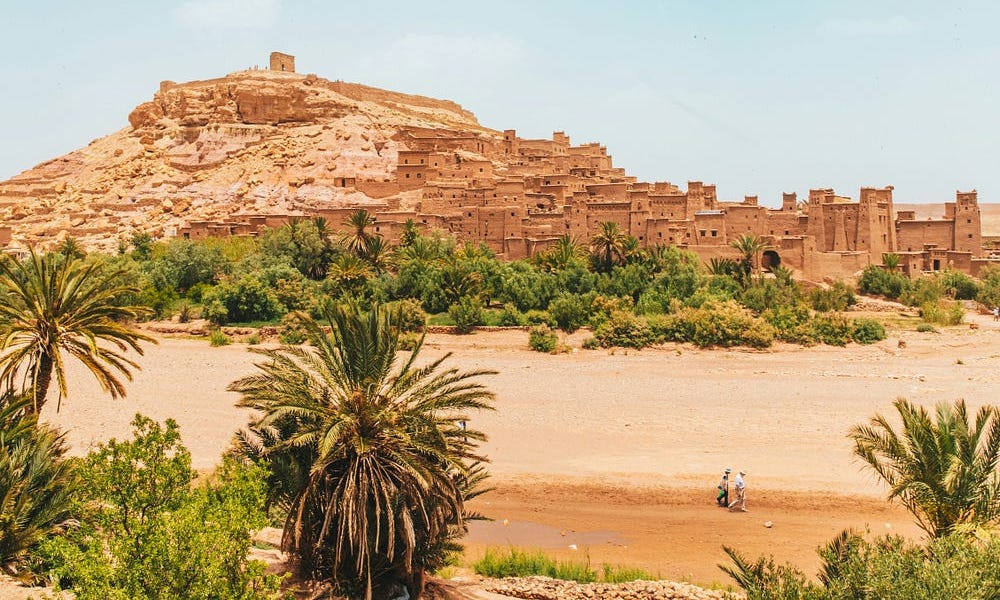Anthills of Civilization
Anthills of Civilization

Anthills of Civilization

archived (Wayback Machine)
Anthills of Civilization

Anthills of Civilization

archived (Wayback Machine)
The essay argues that large, semi‑permanent settlements long pre‑dated intensive farming, hierarchy, and monarchy. Drawing heavily on David Graeber and David Wengrow’s The Dawn of Everything, it presents sites such as Göbekli Tepe (c. 9600 BCE) and Çatalhöyük (c. 7100‑5950 BCE) as examples of egalitarian “cities” whose inhabitants were still mainly hunter‑gatherers who only “played” at farming. It then claims that forced migration into the Tigris–Euphrates marshes pushed people toward year‑round cereal agriculture, generating large surpluses that could be monopolised and guarded. This, the author says, accidentally produced grain‑based city‑states, hierarchy, and kingship. Once agriculture took hold, it allegedly triggered mass deforestation, soil erosion and desertification across the Middle East, a cycle later repeated worldwide. Modern fossil‑fuel civilisation is portrayed as the same dynamic on steroids: a one‑off bonanza of ancient sunlight that will soon end in climate‑driven collapse. The piece forecasts warming of ≈ 4 °C by the 2080s, an eventual 5–10 °C rise, a shutdown of the Atlantic Meridional Overturning Circulation, and the long‑term relocation of humanity to an ice‑free Arctic rim empire after population crash. Underlying it all is a systems‑theory view: societies self‑organise to maximise energy throughput; unless radical change occurs, ecological limits will cap complexity and force contraction.
| Claim | Evidence marshalled in essay | What current scholarship says |
|---|---|---|
| “Cities pre‑date agriculture.” | Göbekli Tepe & Çatalhöyük cited as “cities” of foragers. | Göbekli Tepe is a ritual aggregation site with no domestic refuse or water infrastructure; population was episodic and small, not an urban centre ([greekreporter.com][1]). Çatalhöyük is large (13 ha) but already fully agropastoral: 80 % of plant remains are domestic wheat/barley and caprines were herded ([link.springer.com][2]). Natufian villages (50‑300 residents) show long‑term occupation just before crop domestication, but none reached the 5‑10 k urban threshold ([worldhistory.org][3]). |
| Temporary “festival kings” set rules. | Not documented; idea borrowed from Graeber & Wengrow. | Archaeologists find no direct evidence for ephemeral kingship in pre‑agricultural Levant or Anatolia; earliest royal iconography appears only c. 3300 BCE in Uruk. The essay’s assertion is speculative. |
| Agriculture caused immediate ecological ruin and deserts. | Generalised references to Mesopotamian deforestation. | Irrigated farming did trigger salinisation and local deforestation, contributing to later declines ([forces.si.edu][4]). But the southern alluvium was never “forest”—it was marshland; wide‑scale desertification took millennia and was patchy. Over‑simplified. |
| Holocene climatic stability uniquely enabled farming. | Stated as prerequisite. | Broadly accepted: stable warm–wet conditions after 11.7 ka aided cultivation, though local experiments began earlier and climate was not perfectly stable ([sciencedirect.com][5]). |
| Climate outlook: +4 °C by 2080s. | Linear extrapolation. | IPCC AR6 shows 2.7 °C (SSP2‑4.5) to 4.4 °C (SSP5‑8.5) by 2081‑2100, not 2080s, and SSP5‑8.5 is now judged low‑probability ([en.wikipedia.org][6]). Recent literature supports risk of AMOC weakening but collapse this century is considered unlikely ([phys.org][7]). |
| Post‑collapse Arctic “empire”. | Author’s extrapolation. | No peer‑reviewed modelling supports a cohesive Arctic super‑state scenario; future habitability depends on many ecological and social variables. Speculative fiction rather than evidence‑based forecast. |
Intellectual merits
Shortcomings & biases
| Statement in essay | Verdict | Corrected information / nuance |
|---|---|---|
| Large cities existed “thousands of years” before agriculture. | Mostly false. | Earliest long‑term settlements over 10 ha coincide with mixed farming (Jericho PPNA, Çatalhöyük). Ritual megalithic sites predate crops but are not cities. |
| Çatalhöyük practised only “play farming”. | False. | Faunal and botanical assemblages show systematic cultivation and herding from the site’s founding ([link.springer.com][2]). |
| Agriculture began because marsh foragers were “forced” into cereal dependence. | Unproven. | Domestication in the Levant preceded southern Mesopotamian settlement; migration into marshes was a later Ubaid‑period expansion. |
| “Forests precede civilisation and deserts follow them.” | Over‑general. | Some civilisations arose in grasslands (Steppe pastoralists) or floodplains already treeless. Deforestation/desertification are context‑dependent. |
| Present trajectory → +4 °C by 2080s. | Inflated. | Mid‑range scenario 3 °C by 2100; +4 °C by 2100 possible only under very high‑emission SSP5‑8.5 ([en.wikipedia.org][6]). |
| AMOC shutdown imminent, Europe will cool “for centuries”. | Low‑probability this century. | Latest models show a weakening trend; full collapse risk rises after 2100 but remains deeply uncertain ([phys.org][7]). |
Bottom line
The essay is thought‑provoking but over‑states its archaeological and climatological case. Graeber and Wengrow’s thesis that urban‑scale congregation can precede full agrarian dependence is intriguing, yet the piece presents it as consensus when it is still hotly debated. Its environmental warnings are directionally sound—industrial civilisation is indeed energy‑hungry and ecologically costly—but the quantitative climate claims cherry‑pick the most extreme possibilities and compress timelines.
A more balanced narrative would:
Until those nuances are incorporated, the piece remains a compelling eco‑anthropological manifesto, not a fully evidenced account.

I enjoyed reading this, as it aligns with my current gloomy worldview. I love history and alternate-world thinking, and am very interested in the Neolithic and the rise of civilisation. So I asked ChatGPT to summarize and fact-check the article. I leave it here for the curious reader.